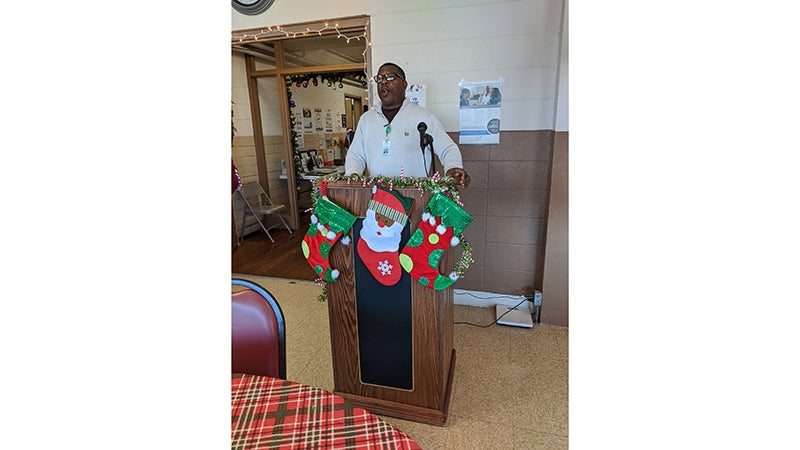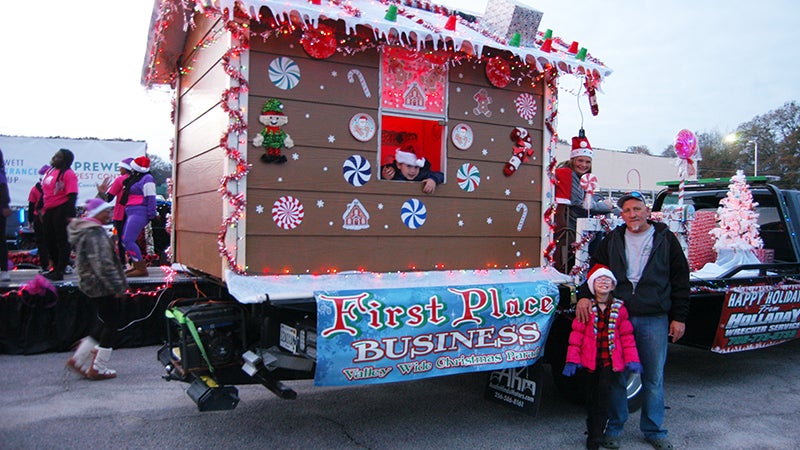‘No-kill dream:’ New director revamps Chattahoochee Humane Society
Published 8:00 am Thursday, August 17, 2023
|
Getting your Trinity Audio player ready...
|
WEST POINT — At last Thursday’s noon hour meeting of the West Point Rotary Club, the new director of the Chattahoochee Humane Society animal shelter talked about her goals of encouraging responsible pet ownership and of having a no-kill shelter. Amber Mingen is now making a transition from being a shelter volunteer to being its director.
“This is something that’s near and dear to my heart,” she said. “I have been an animal lover at heart for all of my life. For years I would never go to a shelter. I knew that if I saw the animals there I would want to adopt them all or let them go.”
She has found a way to compromise on this. “If I can spend 10 or 15 minutes a day with them each one will be getting some quality time,” she said.
Mingen said she has found some ways to improve on what’s been done before at the shelter.“I want people who donate to know where their money is going,” she said. “I also want people to know that the last thing in the world we want to do is to euthanize an animal.”
For some time now, the only animals that get put down at the local shelter are the ones that are sick or overly aggressive.
The goal is to be a no-kill shelter. This means less than 10 percent of the animals brought there are euthanized.
“I want to be open with the public about what is going on at the shelter,” Mingen said. “There’s a need to educate the public about our feral cat population. What we want to do is to trap them, have them spayed or neutered and release them back where they were found so they can continue to live a natural life without breeding in the wild.”
“There’s a problem with dog owners who are not responsible,” she said. “They are allowing their dogs to have too many puppies. They are leaving them at our gate or leaving them at the end of a dirt road. We don’t want this going on. We want people to be responsible with their pets.”
A major factor helping local shelters in this part of the country is the demand for dogs and cats in the Midwest and Northeast. Local rescues transport them there, and adoptions take place fairly rapidly. Because of widespread spaying and neutering in those parts of the country, there aren’t that many unwanted cats and dogs.
Having a cat or dog spayed or neutered isn’t as expensive as many people think. “If you have an income limit, you can get it done for around $50,” he said.”In some cases, you can get it done for free. We want our staff to have answers for questions anyone might have. We want to always offer good advice when it comes to pet ownership.”
When a local animal control officer takes a dog or cat to the shelter, it’s kept for seven days. This will allow an owner time to come and claim it. After that first week, the animal is up for adoption.
A recurring problem that keeps the local shelter from reaching its goal of a no-kill shelter is the influx of overly aggressive dogs. “We had to put down five of them in July,” Mingen said.
In some cases, these are dogs that have been trained to fight.
“We are trying to be a no-kill shelter,” Mingen said. “I have high hopes we can get there.”
Donations are of big help in getting the job done of providing humane treatment for animals at the shelter. “We recently got a donation of high-performance dog food for adult dogs,” Mingen said. “Donations like that really help us and we really appreciate it.”
The animals are frequently examined for any possible medical problems. “We test for heart worms,” Mingen said. “One mosquito bite can transmit this to a dog.”
There’s a thrift shop at the shelter. “We are keeping donated items on shelves,” Mingen said. “We appreciate anything people donate in the way of pet care.”
Mingen said an average of seven dogs and cats are brought to the shelter every week. Adoptions and the work done by rescues help, but there’s still more that needs to be done to reach the goal of being a no-kill shelter.
To be considered a no-kill, a shelter or rescue must have at least a 90 percent placement rate for the animals in their care. The term “no kill” comes from a movement that originated in the 1980s and 1990s. At the time, a common way to obtain a dog or cat was to go to a local breeder. Shelter animals were often seen as a less desirable, broken alternative for those who couldn’t afford a purebred animal.
No-kill was formed as a response to the overwhelming numbers of healthy animals being euthanized in shelters across the U.S. The no-kill campaign asked for a commitment from communities to take measures to save all healthy and treatable pets from unnecessary euthanasia.
The strategy worked. According to Shelter Animals Count, adoption numbers have more than quadrupled over the last decade. As adoptions became more popular with the public, shelters were able to gain more funding. which results in better treatment for the animals.
Mingen lives in West Point with her husband and four children. Her husband owns and manages a travel ball team.






